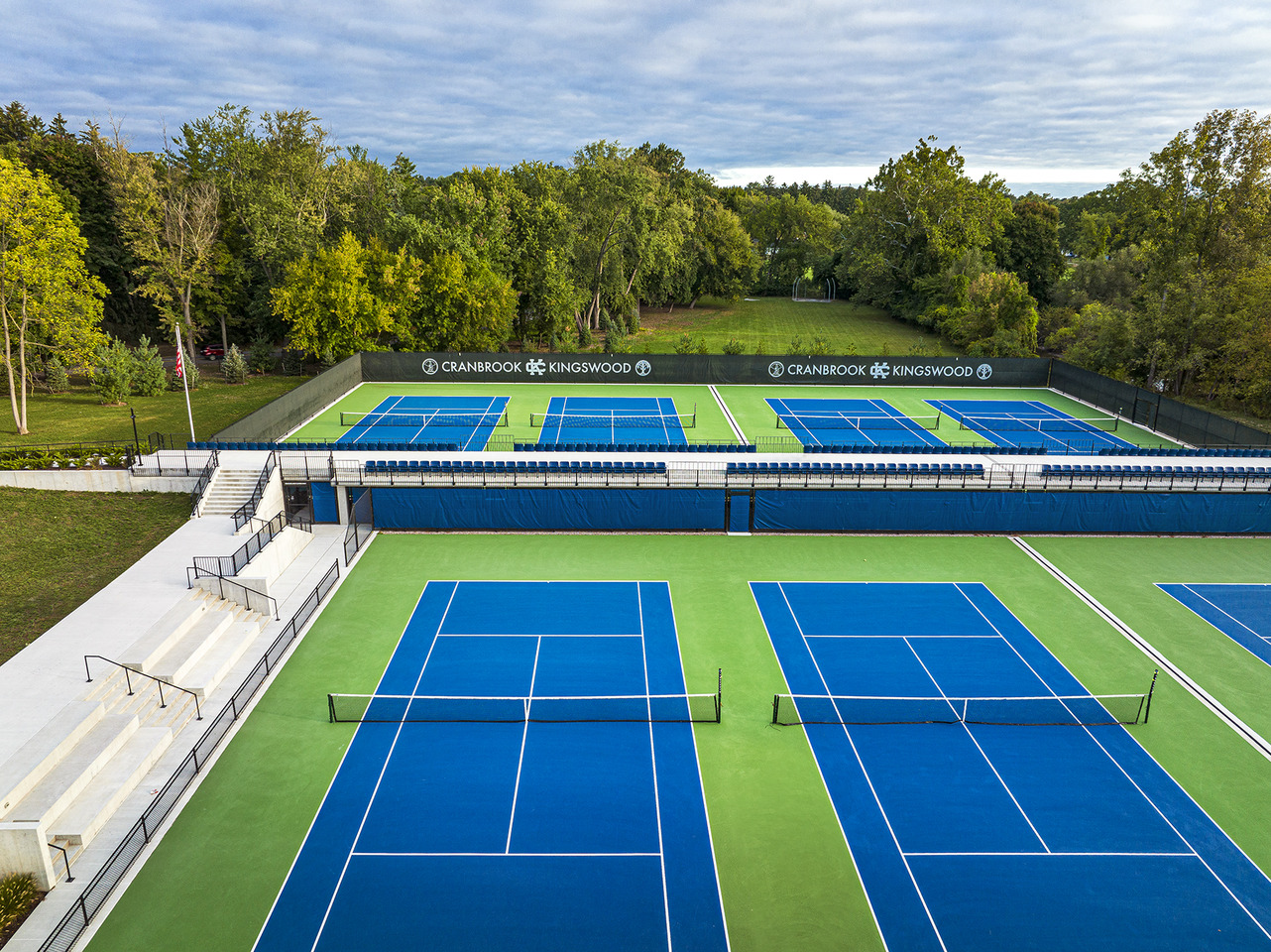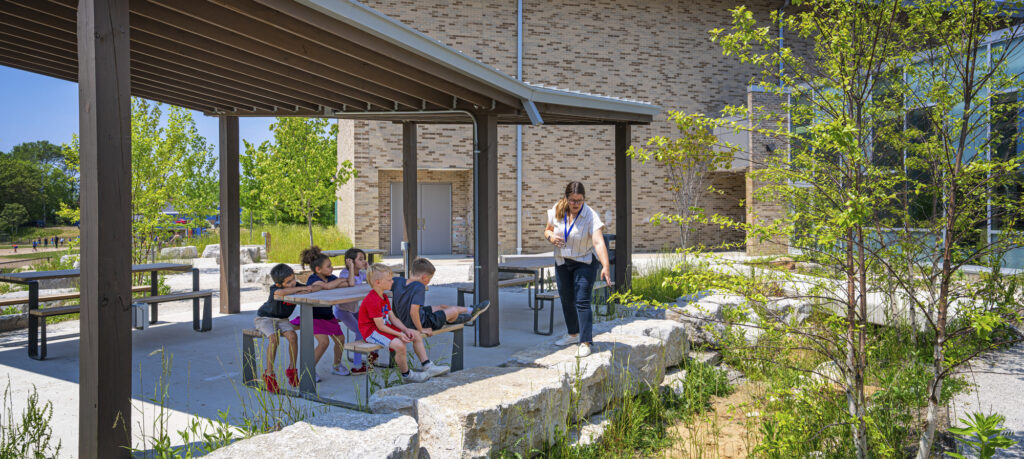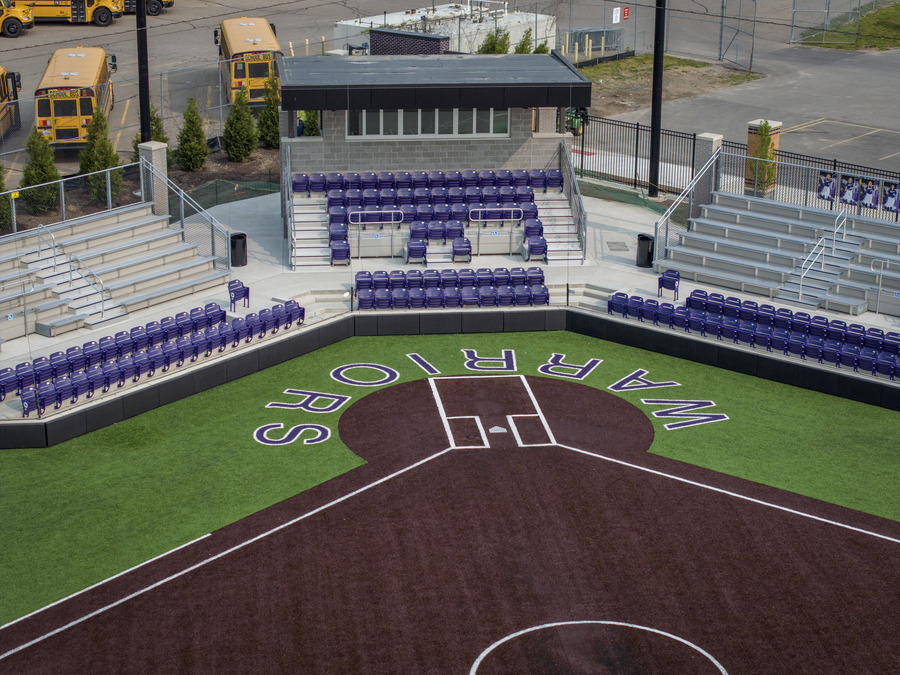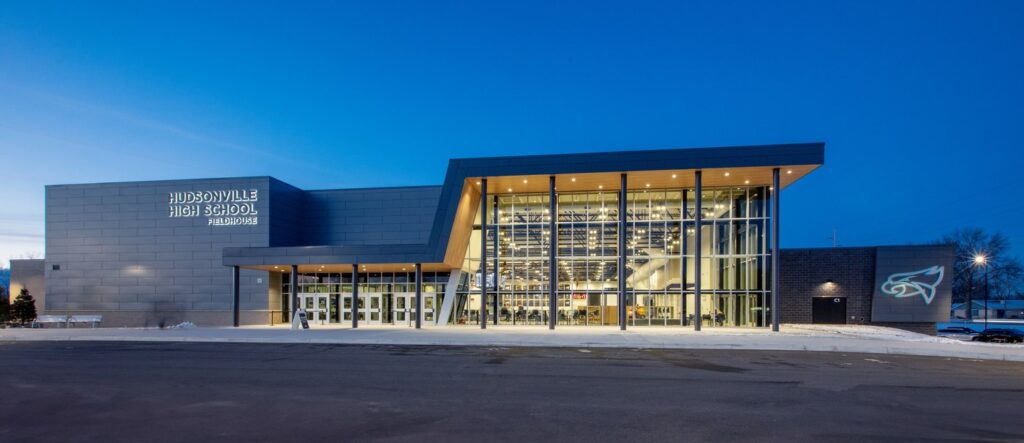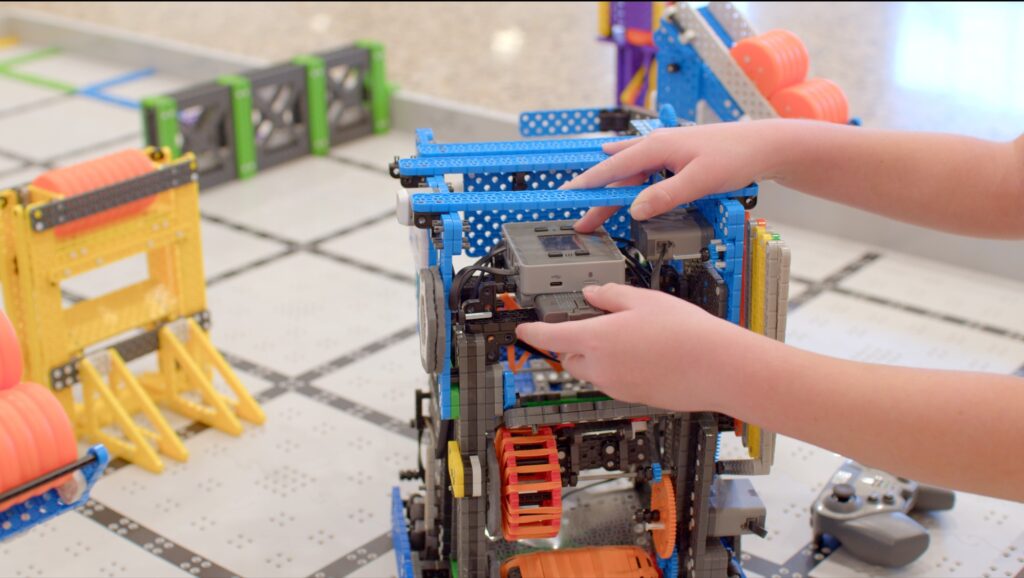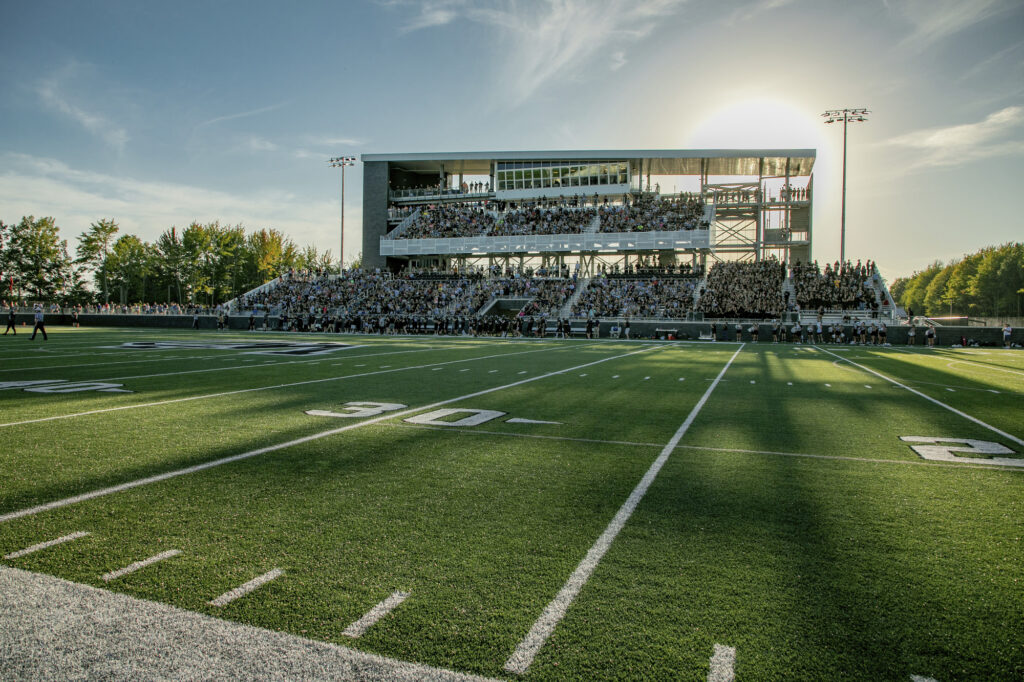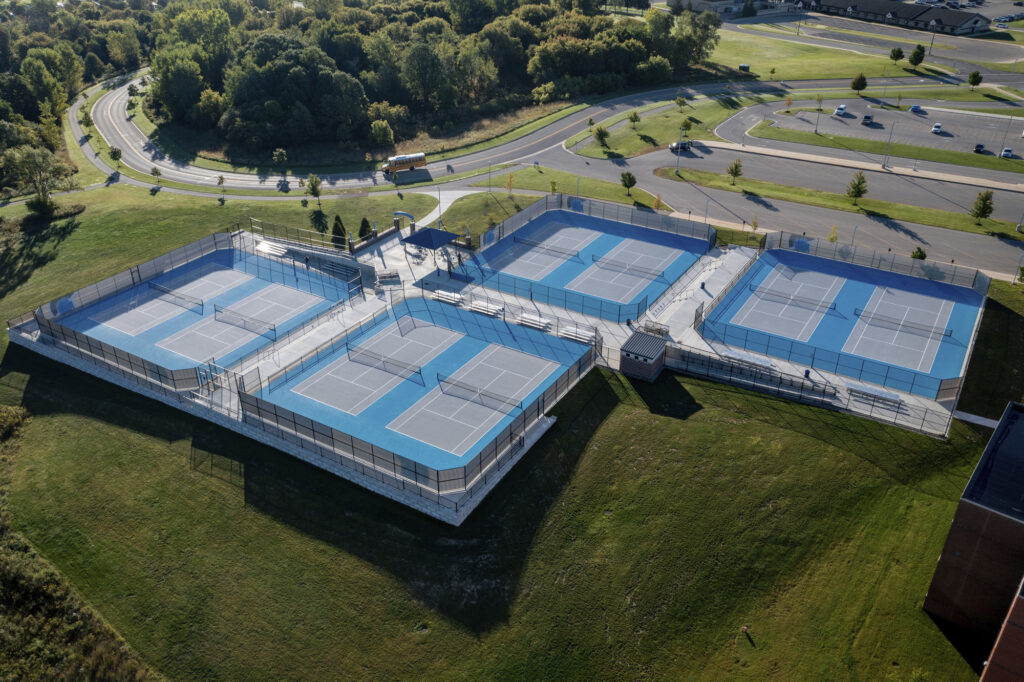School athletics may be characterized as an extracurricular activity, but their influence extends far beyond the playing field. In both K–12 and higher education, athletic programs and facilities have a powerful effect in shaping institutional branding, strengthening school culture, building community pride, and even influencing enrollment decisions. When thoughtfully integrated, athletics become a strategic asset that fuels student engagement and community involvement.
Athletics as a Catalyst for School Branding
- Facilities as First Impressions: Athletic stadiums, often centered around football, are seen as a uniquely American tradition that can shape the identities of students, institutions, and communities. From fields and courts to stadiums and signage, athletic facilities send a clear message: we invest in our students and we’re proud of our programs.
- Merchandise and Mascots: Spirit wear, team colors, and mascots are more than just fun, they’re vital branding tools. Whether worn at family-friendly Friday night games or shared across social media, these elements reinforce pride and recognition in the broader community.
- Creating a Unique Fan Experience: The Chippewa Champions Center at Central Michigan University is a shining example of using athletics to make a memorable first impression to all campus visitors. Located directly behind the north end zone, the center is one of the most unique fan experiences in the Mid-American Conference (MAC) and is located just steps from the Chippewas’ locker room, bringing fans up close and personal to the action on the field.

Fostering a Culture of Belonging
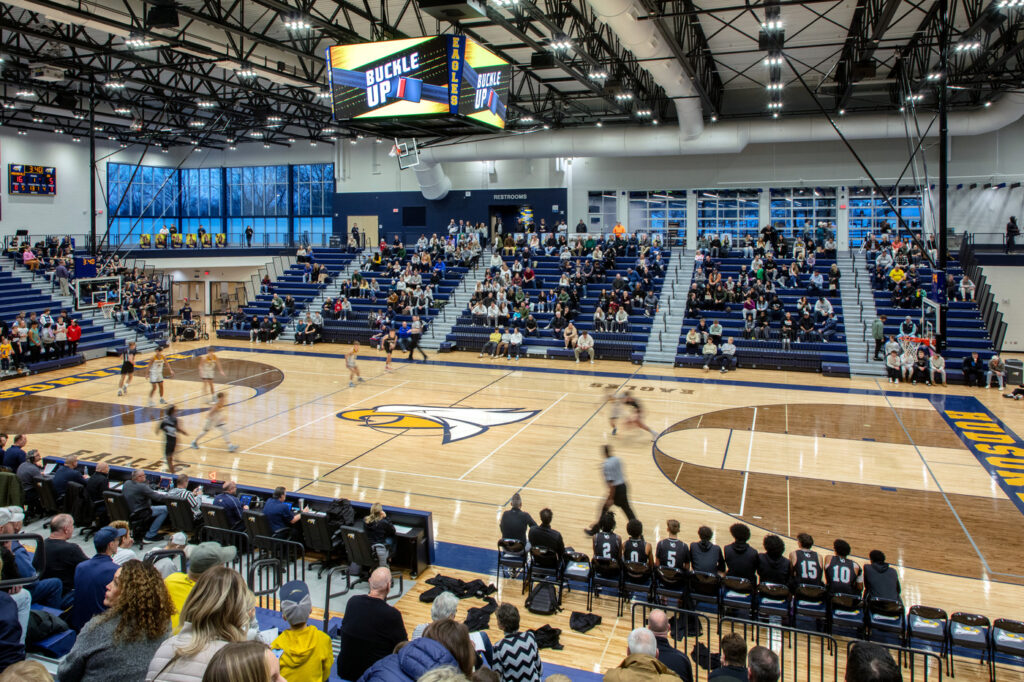
- Inclusion Through Shared Experiences: Games, practices, team nights, and fundraising can act as additional gathering points that unite students, staff, families, and alumni. Whether you’re on the team, in the band, broadcasting the game, or cheering from the stands, there’s a place to belong. These shared experiences help create deep emotional ties to the school community and to each other.
- Multi-Use Spaces That Serve Everyone: Creating flexible athletic spaces that serve educational, community, and event needs is a must. They serve PE classes by day, sports teams by night, and community events on weekends. Designing these spaces to be used by both male and female sports, and choosing durable materials that encourage year-round use, make great financial sense for educational institutions that often rely on public funding.
- Elevating The Student Experience: The award-winning Hudsonville Fieldhouse has ample space to support a variety of sports programs, community members, and school classes. It was important to the district to create spaces that reflected student talent, celebrated their successes, and reinforced the brand and culture of Hudsonville.
Driving Student Excitement and Retention
- K-12 Impact: Competitive or high-profile athletics attract families and offer opportunities for students to choose what best suits their talents. More schools are adding options in fast-growing sports like girls’ flag football, boys’ volleyball, rugby, and lacrosse. These offerings pique student interest, attract new demographics, and promote year-round campus activity.
- Giving K-12 a Collegiate Feel: The turf fields at Woodhaven High School promote a sense of school pride with bold logos and school colors that evoke a collegiate feel to the complex, while also promote accessibility for all students, athletes, and community members regardless of gender or physical abilities.
- Higher Ed Impact: Athletics can be a deal-breaker or deal-maker during the college selection process, especially for student-athletes and school spirit-minded students and families. Highlighting athletics during campus tours and recruitment campaigns helps elevate the entire student experience. Winning seasons, legendary games, and beloved mascots are powerful touchpoints that also keep alumni connected, and invested in, your school.
- A Multi-Functional Alumni Space: The Stadium Club at Western Michigan University (WMU) transformed from primarily game day use to a 24/7/365 a year entertaining, fundraising, and intimate conversation space. The goal of the updated suite was to offer an elegant and welcoming experience to patrons that is unique to WMU.
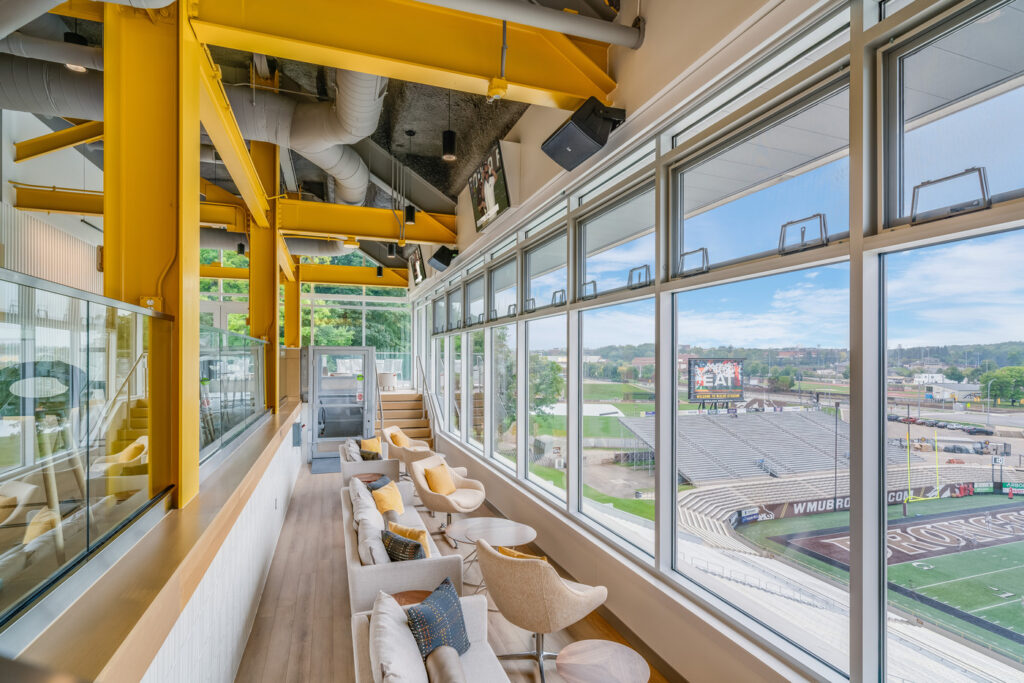
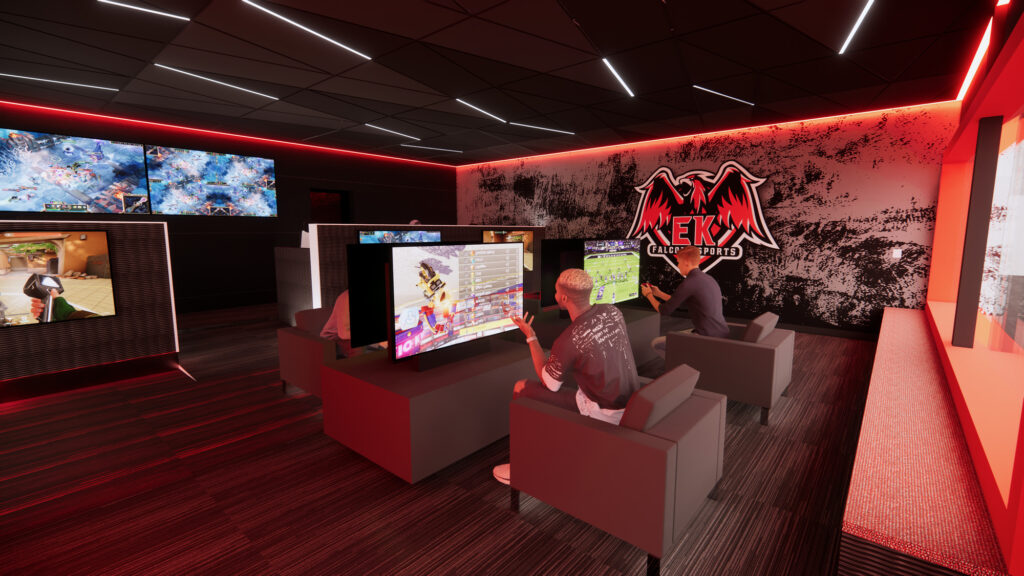
Expanding the Definition of Athletics
- Intramural and Recreational Sports: In higher ed, intramural sports provide an outlet for physical activity, connection, and community without the intensity of varsity athletics. They help support student wellness and provide opportunities for leadership and event planning, especially for students not involved in other clubs.
- Developing Year-Round, Well-Rounded Athletes: Schools are shifting away from the “one-sport athlete” mindset and instead encouraging participation in multiple sports or off-season training programs. This approach helps prevent burnout and injury, while promoting teamwork, adaptability, and resilience.
- Exploring eSports: Competitive gaming programs are rapidly growing in both K–12 and higher education. East Kentwood High School in West Michigan has one of the top-ranked eSports teams in the nation and was placed in the Top 20 programs by USA Today. With more than 100 students on the team, their eSports program offers new ways to engage students who might not connect with traditional sports while still teaching them teamwork, strategy, and discipline.
Schools that view athletics as a strategic investment and not just an extracurricular perk are better positioned to create pride-filled, inclusive, and thriving communities. From the stadium to the student section, the impact of athletics is undeniable.
Want to explore what’s possible? Contact GMB to see how our teams can elevate your school’s athletic experiences.

